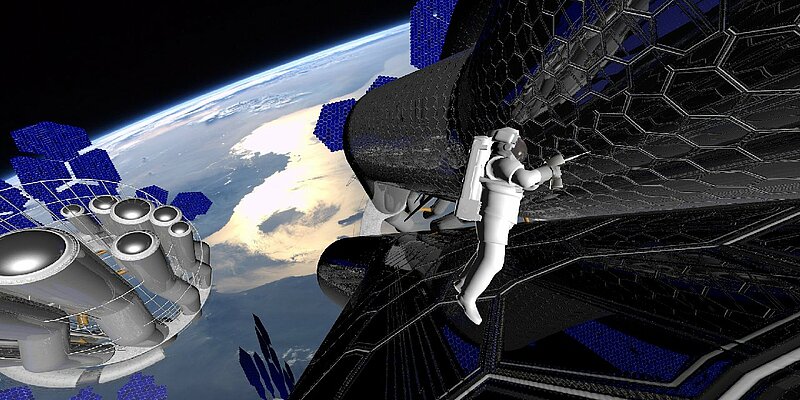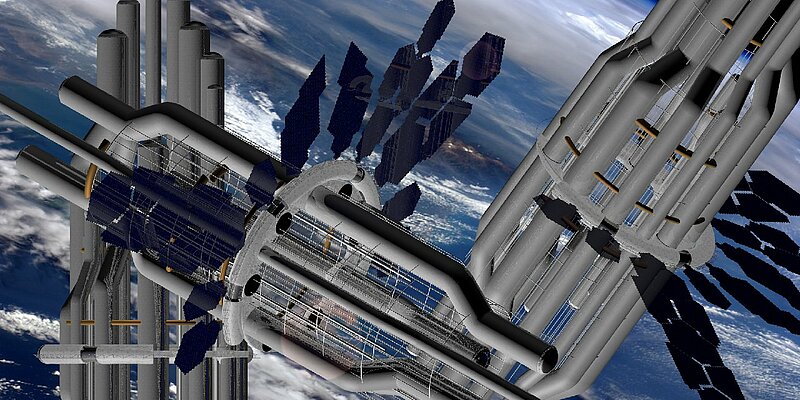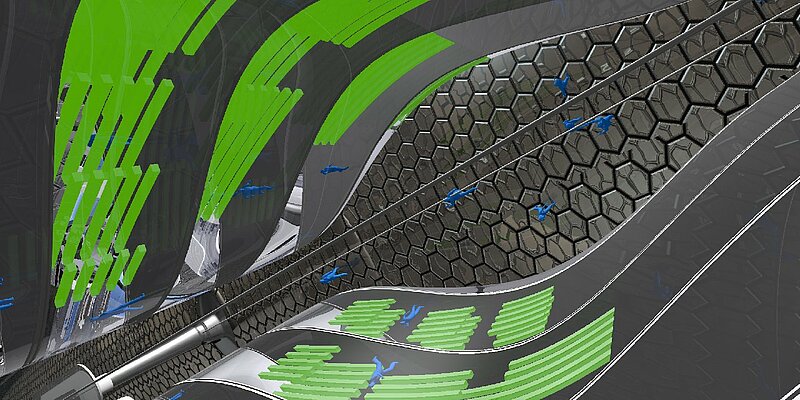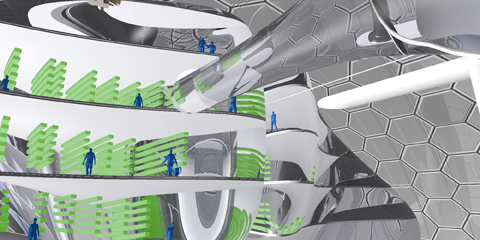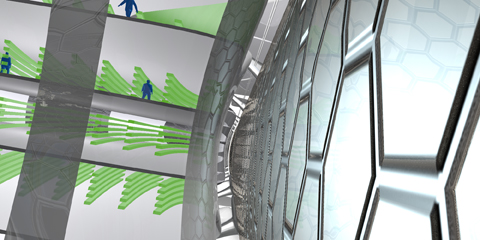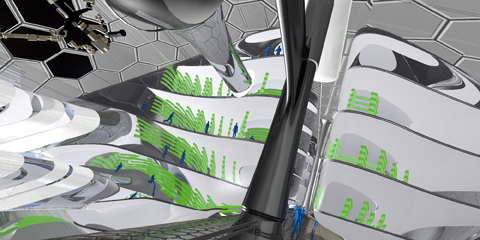S.A.S.HA. Self Assembly Space Habitat
- Year2013
- LocationSpace
Human colonization of the space will be possible thanks to the exponential growth and advances on various fields of science and technology. The synergetic relation that takes place between Quantum physics, Biotechnologies and Nanotechnologies may bring us even closer to the horizon that we think and its application on microgravity environments may be the driving force that accelerates the space colonization.
The space is a extreme environment where conventional techniques of construction doesn't work and human habitability is restricted by space hazards. In order to make a serious proposal that tackles this obstacles 3 points will be addressed: How to build it, how to extend long periods for the inhabitants, and how to make it secure against space hazards.
When analyzing at the structural strength of one of the strongest materials, the Carbon Nanotubes, is clear that a tubular configuration connected with an hexagonal structure provides strength to the geometric system. In the space this tubular configuration works by distributing forces on the walls when different pressures, this is crucial to provide with the right pressure in order to make human life possible. This type of tubular system relies on Hexagonal modularity which can be adapted to construction processes
To offer healthy living conditions, The habitat consist of a cluster of pipes that has circular angular rotation this generates the force enough to create G forces like in the film “2001: A Space Odyssey”. With a maximum radius of 240 m and a minimum of 120 m to the centre of the axial rotation there is a gradient of G. This means that the inhabitants can enjoy and experience the various levels of gravitational forces an also this constitutes an input parameter to organize the different programmatic functions



